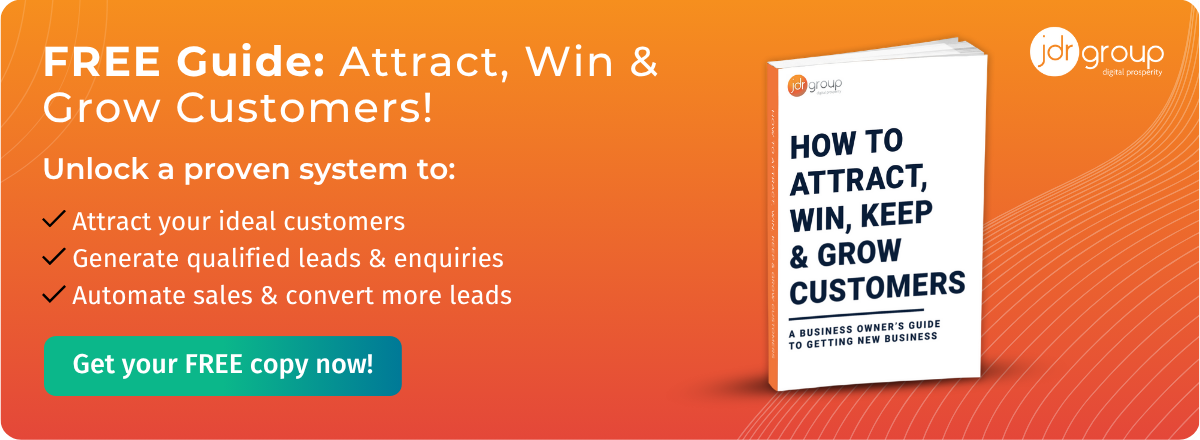Conquering B2B Growth Challenges With High-Impact Sales Strategies

B2B business owners face the constant challenge of managing growth while navigating a difficult and rapidly evolving business landscape. As the UK economy evolves with increased digitalisation, IT connectivity, and automation, it’s crucial for business owners to adapt their sales strategies in order to thrive.
Some of the most common growth challenges faced by B2B SMEs include long sales cycles, inefficient sales processes, and resource and time constraints.
- Long Sales Cycles – B2B sales typically require a longer decision-making process than B2C, with multiple stakeholders frequently involved in every transaction. In high-value sectors, such as manufacturing equipment, lead times can often extend to months or even years. This timescale is compounded by inefficient sales and communication processes, such as relying on face-to-face sales meetings, or director-to-director phone calls to move the process along.
- Inefficient Sales Processes – Outdated or manual sales processes can result in wasted time and effort for sales representatives, as well as duplicated efforts and embarrassing miscommunications, which can often result in missed opportunities and lower gross revenues. What makes a sales process inefficient isn’t simply the labour involved in each task, but also a lack of visibility among salespeople, which makes collaboration between teams more difficult and time-consuming.
- Resource And Time Issues – Limited resources and time constraints are a perennial concern for SMEs, making it problematic to invest in the development and implementation of effective sales strategies and technologies.
What Is The Solution?
SMEs don’t usually have the budget to pour more in-house sales resources into overcoming these growth challenges by brute force, so in this article, we’ll look at how implementing smart high-impact sales strategies, using only the resources you currently have available, can help your business conquer these challenges and achieve higher sales and profits.
What Constitutes A ‘High-Impact’ Sales Strategy?
A ‘high-impact’ sales strategy is a personalised sales methodology that significantly increases your company’s revenue and profit growth in terms of ROI, involving strategic, top-level decisions that precede tactical ones. In a high-impact sales strategy, your focus isn’t on making your salespeople work extra hours to make more sales, or even expanding your team, but on finding ways to maximise the number of sales each rep can make with their current time resources.
For example, a targeted investment in software or process reorganisation that increases the average sales per salesperson from 4 to 6 sales per month, or raises the average sales value by 40%, would have a bigger impact than simply hiring more salespeople to use the systems already in place.
Here are some of the key elements of developing a high-impact sales strategy:
1. Customer Centricity
Accurately anticipating your customer’s needs, pain points, and preferences is crucial to formulating a strategy that has a high impact on your bottom line. Adopting a customer-centred approach enables you to tailor your marketing messages, USPs, and written content to provide maximum value and relevance to your customers, thus maximising conversions.
2. Value Proposition
Articulating a clear, compelling, and consistent value proposition across all your digital assets and marketing collateral is a key strategic consideration. Your value propositions should explain why customers should choose your products or services over others in the market, in language that addresses their needs and purchase motivations.
3. Sales Process Optimisation
Streamlining and optimising your sales process, e.g. by implementing a marketing automation platform, can yield higher efficiency and effectiveness, thus lowering the cost of sales and increasing your ROI. Optimisation can extend to everything from prospecting and lead qualification to proposal development and closing deals.
4. Stakeholder Collaboration
Facilitating faster and easier collaboration between sales, marketing, and other departments can lead to a more holistic, accountable, and effective sales strategy, eliminating miscommunications and wasted time.
5. Sales Enablement Technology
Leveraging sales software and technologies in the right way can boost your sales efforts considerably – this may involve investing in a customer relationship management (CRM) system, sales analytics tools, or a cloud-based communication and collaboration platform.
Find Out More
At JDR Group, we offer a strategic and integrated approach to SME marketing and sales that covers all aspects of your sales process, aiming to maximise value and streamline costs to overcome your growth challenges. Get in touch today to find out more about our digital marketing services or download our free guide on how to attract customers to your business.
Image Source: Pexels



